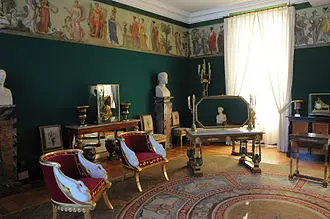 Image: The Basilica Palladiana at Vicenza in Veneto, Italy
Image: The Basilica Palladiana at Vicenza in Veneto, Italy
Neoclassical architecture, also known as Classical Revival architecture, is a timeless style that emerged in the 18th century and continued until the mid-20th century. It originated in Italy, France, and Germany and quickly became one of the most prominent architectural styles in the Western world. Neoclassical architecture aimed to strip away the excesses of the Late Baroque style and return to a purer and more authentic classical style, adapted to modern purposes.
A Return to Classicism: Revisiting the Past
In the development of Neoclassical architecture, the study of ancient classical buildings played a crucial role. The advent of archaeology and accurate records of surviving classical buildings allowed architects to gain a deeper understanding of the architectural principles of ancient Rome and Greece. Initially drawing on Roman architecture, Neoclassicism later embraced Greek Revival architecture, as scholars gained a better understanding of Greek influences. The style emphasized simple geometry, symmetry, and social demands over ornamental details.
 Image: Château de Malmaison, 1800, room for the Empress Joséphine, a fusion of Directoire and Empire style
Image: Château de Malmaison, 1800, room for the Empress Joséphine, a fusion of Directoire and Empire style
Over time, Neoclassical architecture evolved and incorporated a wider range of classical influences, including those from Ancient Greece. It spread across Europe and influenced cities such as Berlin, London, and Washington, D.C. Notable examples of Neoclassical architecture include the Altes Museum in Berlin, the Bank of England in London, and the White House and Capitol in Washington, D.C.
Neoclassical Architecture Today: A Modern Renaissance
Although Neoclassicism reached its peak during the 18th and 19th centuries, its influence can still be felt in the 21st century. The style has been revitalized as New Classical architecture or New Classicism, with contemporary architects embracing its timeless elegance. Even in a world dominated by Postmodernist architecture, elements of Neoclassical architecture continue to inspire and shape modern designs.
 Image: The neoclassical Helsinki Cathedral in Finland
Image: The neoclassical Helsinki Cathedral in Finland
Neoclassical architecture has not only left its mark on iconic buildings but has also influenced city planning. Its systematic approach to urban design, characterized by grids, central forums, and boulevards, has shaped cities around the world. From Paris to Saint Petersburg and Washington, D.C. to Buenos Aires, the neoclassical urban planning patterns transformed cities, creating order and functionality.
Whether it's the impressive structures in Germany, the elegant buildings in Britain, the grandeur of Russian architecture, or the beauty of American landmarks, Neoclassical architecture continues to captivate and inspire. Its timeless appeal and refined design have solidified its place as one of the most enduring and influential architectural styles in history.
Sources:
- Wikipedia contributors. Neoclassical architecture [Internet]. Wikipedia, The Free Encyclopedia; 2022 Nov 13, 05:15 UTC [cited 2022 Nov 14]. Available from: https://en.wikipedia.org/wiki/Neoclassical_architecture

















